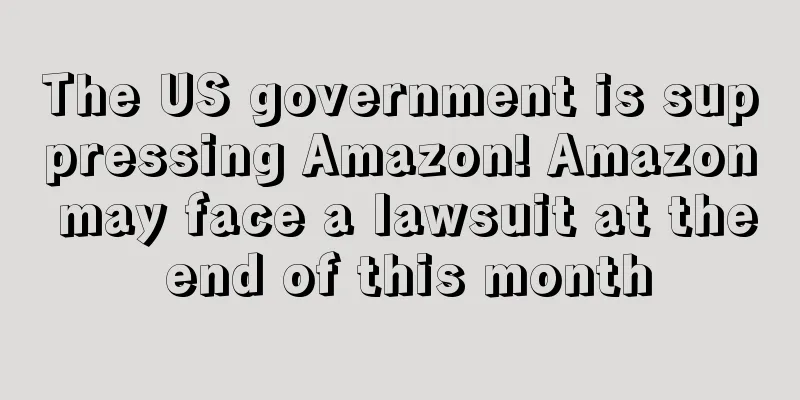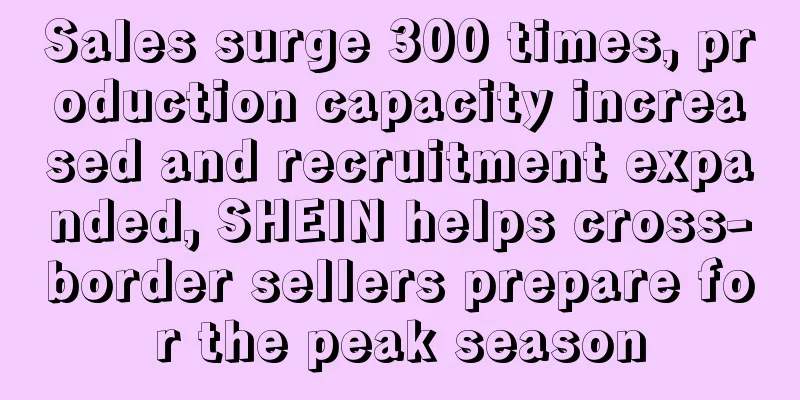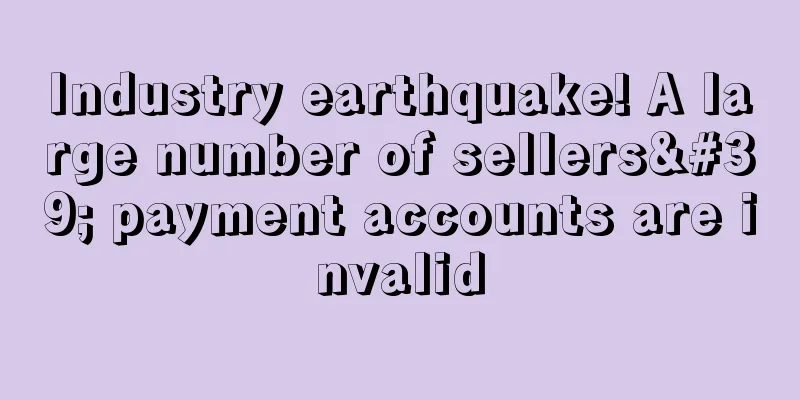Breaking news! FBA warehousing fees increased 3 times overnight

|
Overnight, the cost of shipping goods to FBA via UPS suddenly increased by 2-3 times, which is not a normal increase in peak season surcharges. Without any notice, this change made sellers panic. Everyone was worried about whether the fees they were charged could be refunded if it was a system failure. Other industry insiders speculated that this was a signal to raise fees.
UPS shipping to FBA fees suddenly increased
Recently, many Amazon sellers have found that the cost of shipping to FBA via UPS has skyrocketed 2-3 times overnight, and the sellers cannot accept this increase.
One seller said that the cost of shipping a box of goods from UPS to FBA was about $17, but today the price suddenly increased to $36 per box. He thought that the shipping cost suddenly doubled, which was unacceptable.
Another colleague found that the fee for UPS to deliver a 4x8x8 box weighing less than 3 pounds to FBA suddenly increased from $5.50 to $19. The fee increased by more than 3 times!
This situation is happening widely without any notice. A large number of sellers are uneasy about the sudden increase in fees, and some of them have quickly canceled shipments.
“--The price of goods that usually cost 10 dollars is 27 dollars today; -- A 20x20x20 box that was $18-24 is now $54-68; ——Our cost of shipping to FBA using UPS has tripled; - I processed a shipment at night and estimated the UPS fee to be $9. The next morning I found it had risen to $27. It is impossible for UPS to triple the fee overnight. FBA warehousing fees increased from $20 to $50; - It cost me about $25 to ship a box, UPS increased it to $93.06 per box. - We have canceled a lot of shipments and will not ship again until normal prices are restored."
According to multiple feedbacks, sellers’ fees have increased by at least 2 times, and many have seen an increase of around 3 times.
Now that it is the peak season, sellers know that the peak season surcharge rate has taken effect, but according to their experience, the increase in seasonal fees is usually 2-5%, not 300%. Everyone thinks that there must be something wrong with the system, and this increase is extreme. Some even speculate that Amazon is trying to slow down all new FBA shipments in November and December, and they are raising shipping costs to suppress shipments.
System errors repeatedly occur, and sellers do not know how to ship goods
When noticing the abnormal increase in shipping costs, some sellers asked UPS representatives and were told that there were some changes in the additional handling fees, but the increase was a system error and the platform is currently processing it.
After a large number of erroneous fee increases occurred, UPS fixed the system error that afternoon and restored normal prices. UPS response: For sellers who inquire about rate increases, one suggestion is to cancel the shipment within 24 hours of creation so that no shipping fees are paid. Then the shipment can be recreated using the lower UPS pricing.
This operation also made the sellers tired. One seller said: "Canceling and recreating the shipment will take several hours of work because a lot of shipments were created in the morning." Another seller said that 23 batches of shipments were canceled and the rework time was about 90 minutes, but the excess fee exceeded US$600, so it had to be completed.
However, when sellers were struggling to cancel shipments, a new bug appeared. After the shipping rate returned to normal, the problem occurred again the next morning, and the shipping rate returned to high levels again. In the past two or three days, this error seems to have occurred repeatedly. Some sellers have found that the problem has been fixed, but some sellers are still affected by the high shipping rates in the system.
“I refused to ship at the higher price and tried to resend another batch, and my price went down, like there was a glitch. When I canceled the shipment and restarted, the system showed that I still had to pay the higher fee because it was more than 24 hours. But it wasn’t more than 24 hours, just a few hours, so I ended up paying the higher shipping fee.” A seller was helpless.
Plagued by the new error, some sellers are frustrated. Some peers questioned: "My fees have tripled, which will eat up my profits! Why didn't Amazon notify us about this failure? Now we are stuck and don't know what to do. Can I ship at these high fees first? Will I get a refund later? Or should I stop all shipments?"
The inevitable cost increase
According to an industry insider, the fee increase is related to UPS, which seems to have recently increased shipping costs. The insider said, "I have an automatically authorized prepaid return label, and now I find that the price of this return label has also increased. I tested an item and the cost was $39, but I was charged $67. I will choose to opt out of the automatic return label."
Many sellers have also noticed that UPS's return fees have increased significantly recently.
One seller said, "We've been experiencing a lot of crazy UPS return shipping charges lately. For example, one order was assessed a return shipping charge of $65.15. The product actually weighed only a few pounds, and the Amazon transaction detail page showed the "customer entered dimensions" for the product as 52 pounds. I don't understand how our shipments could have such a high weight, about 50 pounds higher than the actual product weight."
Even more outrageous, the "Carrier Review Size" for this product shows a much higher 63 lbs. There is absolutely no way this product could be 52 lbs or 63 lbs. How can I dispute the cost of this shipment? I spoke to Amazon Seller Support via chat and they just told me to "call UPS about this."
This adjustment of return fees has actually happened to many sellers, who were overcharged by UPS. According to feedback from many sellers, UPS has always had the problem of incorrectly adjusting fees , but this adjustment has become more frequent recently. It said that it has tried to solve the problem. Both UPS and Amazon denied their responsibility.
In the eyes of some sellers, not only does the increase in UPS's error fees for shipping to FBA cause them concern, but FBA's warehousing configuration fees are also a headache.
One seller found that shipping costs for seemingly $0 inbound placement options ( 5 or more identical boxes) were higher. This could also be a glitch, or a roundabout way to charge. The seller further explained: " I'm sending two batches, the first is 5 identical 20 lb boxes with a lot of lightweight items (1380 pieces total), the total shipping cost for the first two options with placement fees is about $55-60, and the total shipping cost for the non- placement fee option is $195.
Due to the high quantity of items, the placement fee was very high, so I paid the seemingly overpriced 0 shipping. The second shipment was 8 of the same heavier 39 lb items (312 total), and the two placement fee options cost a fraction of the 0 placement fee option. If so, will I be refunded for the extra money I was charged ? I am certain it will not. "
For sellers, during the current peak season, they should always pay attention to their shipping status to avoid being charged high fees. FBA Storage Fee rise |
<<: Scale exceeds 100 billion! Another track in Southeast Asia explodes
>>: Many platforms rush to launch Black Friday! Amazon is under attack
Recommend
Deying Holdings went public thanks to its “little yellow duck”!
On January 17, B.DUCK 's parent company, De Y...
A large number of operators are considering switching platforms
Job hunting season is also a season of confusion!...
What is iview? iview Review, Features
iview is a trusted provider of Original Equipment ...
What is Primaseller? Primaseller Review, Features
<span data-docs-delta="[[20,{"gallery"...
What is Shoptago? Shoptago Review, Features
Shoptago is a website building platform under Lian...
What is Brand1 Ventures? Brand1 Ventures Review, Features
Brand1 Venture is a Europe-based investor and acc...
Sellers beware! Most consumers abandon a brand after up to three negative experiences
Customer satisfaction and customer retention play...
The stock was suspended after it was launched and sold well
Some people used to say that it was a rising star...
A large number of cross-border sellers emerge in Jiangsu
Nanjing takes the lead, and Jiangsu's cross-b...
What is Naipo? Naipo Review, Features
Naipo is a home health appliance brand under Aoki...
What is Review, Features?
NNENG REVIEW provides Amazon reviews, live video ...
A quarter of Europeans prefer cross-border online shopping
On July 2, according to foreign media Retail Deta...
What is boyday? boyday Review, Features
boyday is dedicated to sourcing and providing a wi...
What is TOSAN ERP? TOSAN ERP Review, Features
TosanErp is a free e-commerce ERP that serves more...
Multiple guarantees for merchants Cainiao International Express is the first to launch "compensation for late arrival" in Europe
In order to meet the massive cross-border parcels...









